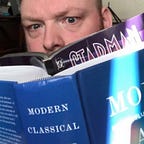Researchers recreate hot-dense quark and gluon ‘soup’ which filled the early Universe
For a few millionths of a second shortly after the Big Bang, cosmologists believe that the Universe was filled with a hot dense ‘soup’ of quarks and gluons. Now researchers believe they may have used the collision of minuscule projectiles and gold nuclei to recreate tiny specks of this perfect primordial fluid.
The study of this fluid is expected to shed light on the force governing the binding of quarks and gluons, the fundamental particles which make up protons and neutrons and thus all the visible matter around us. But what researchers did not expect, is to be able to recreate this fluid of fundamental particles.
Nuclear physicists discovered the strange product whilst analyzing data from Brookhaven Lab’s PHENIX detector at the Relativistic Heavy Ion Collider (RHIC)publishing their findings this week in the journal Nature Physics.
Jamie Nagle, a PHENIX collaborator, helped devise the experimental plan as well as the theoretical simulations the team would use to test their results: “This work is the culmination of a series of experiments designed to engineer the shape of the…
